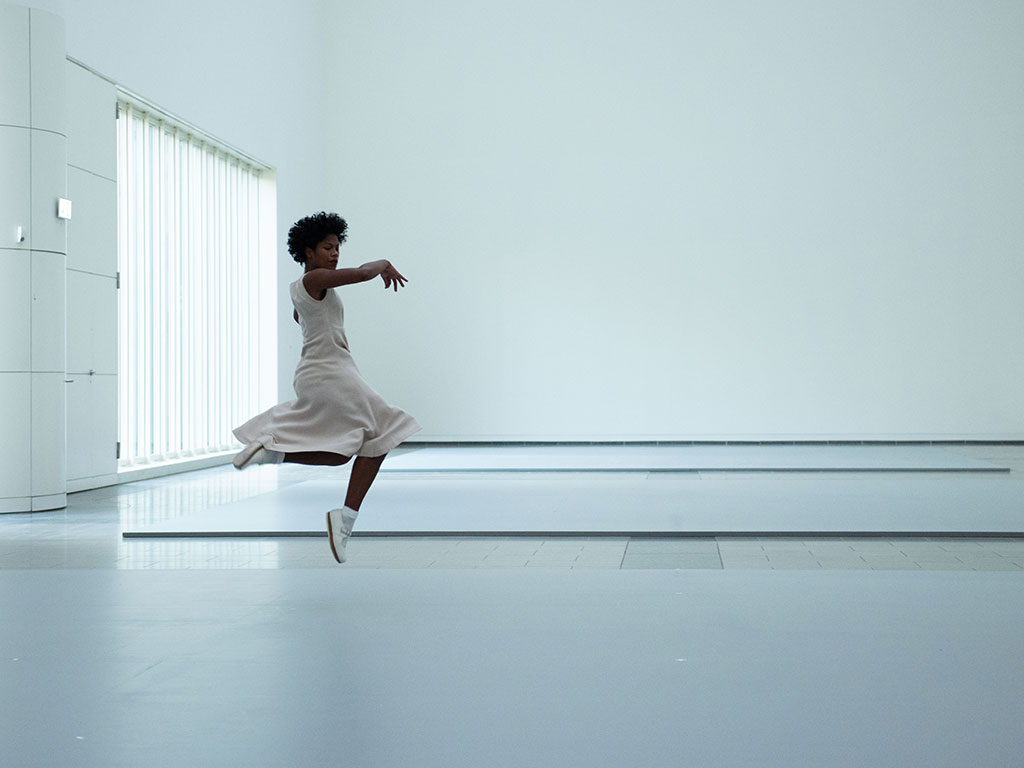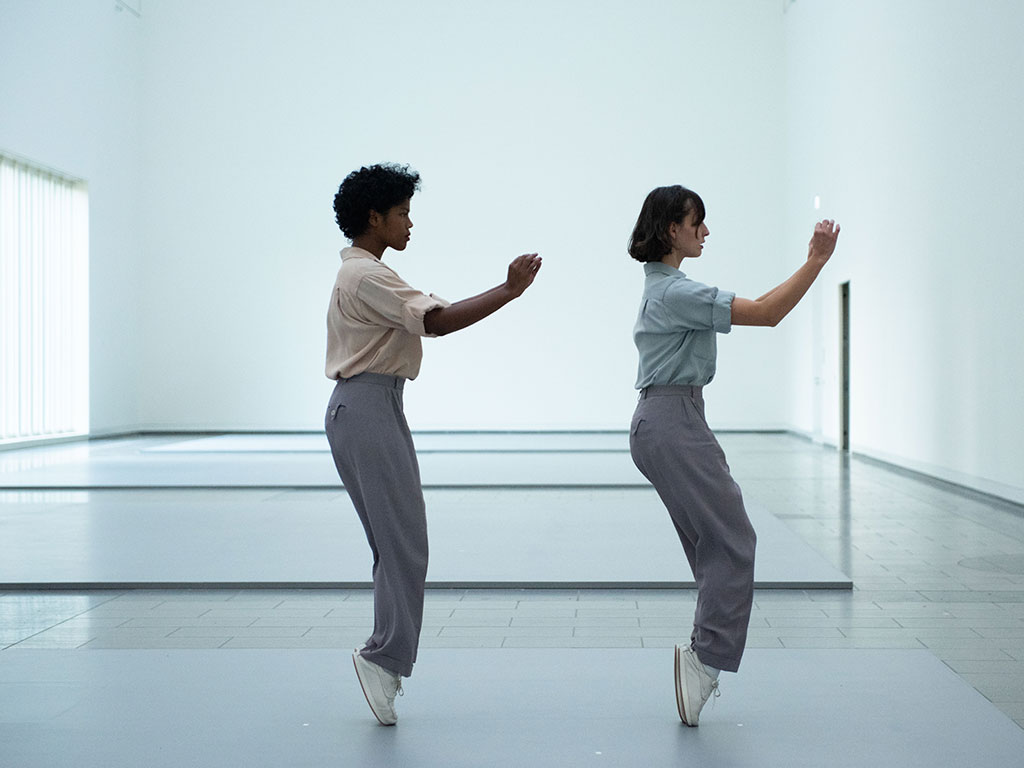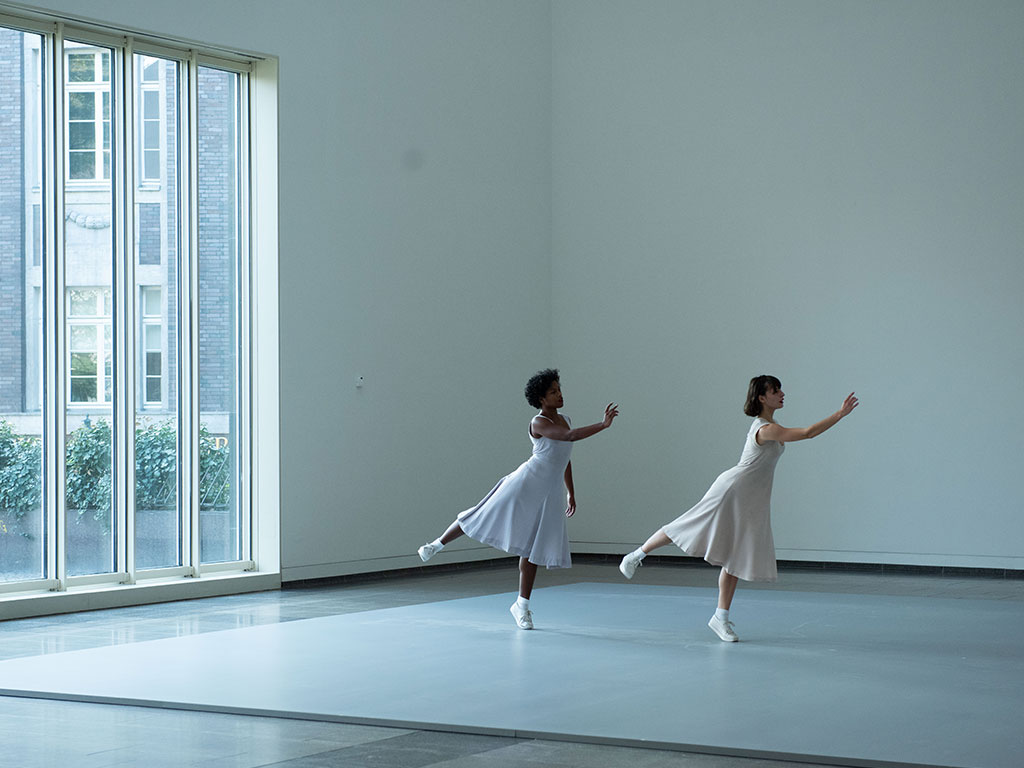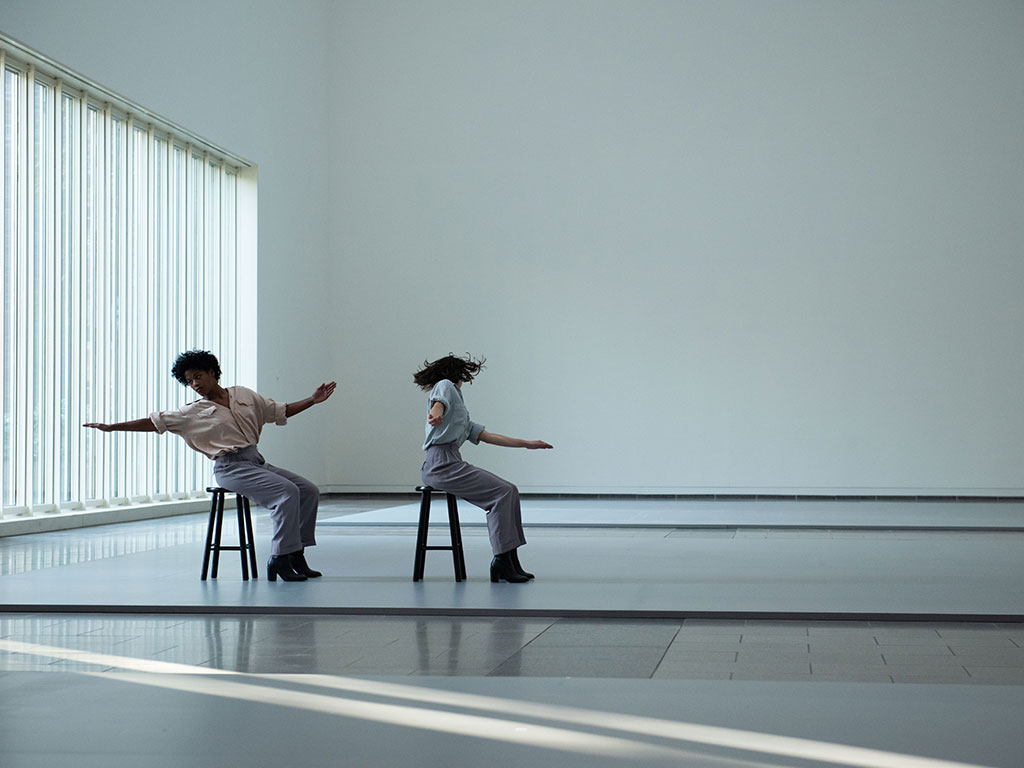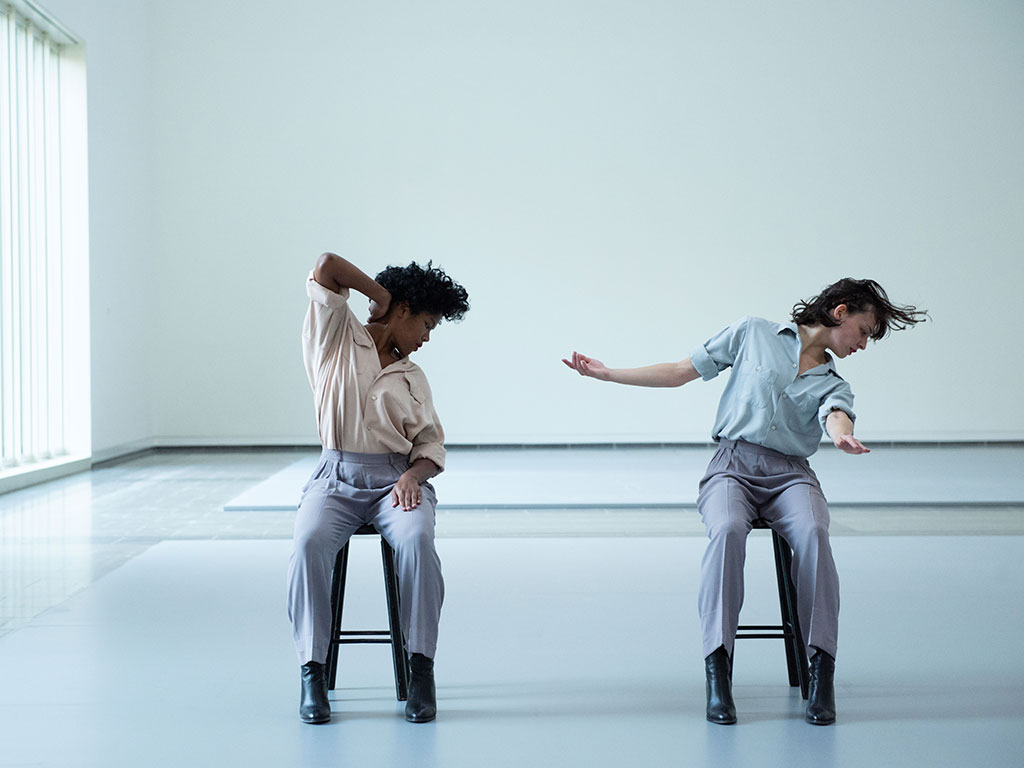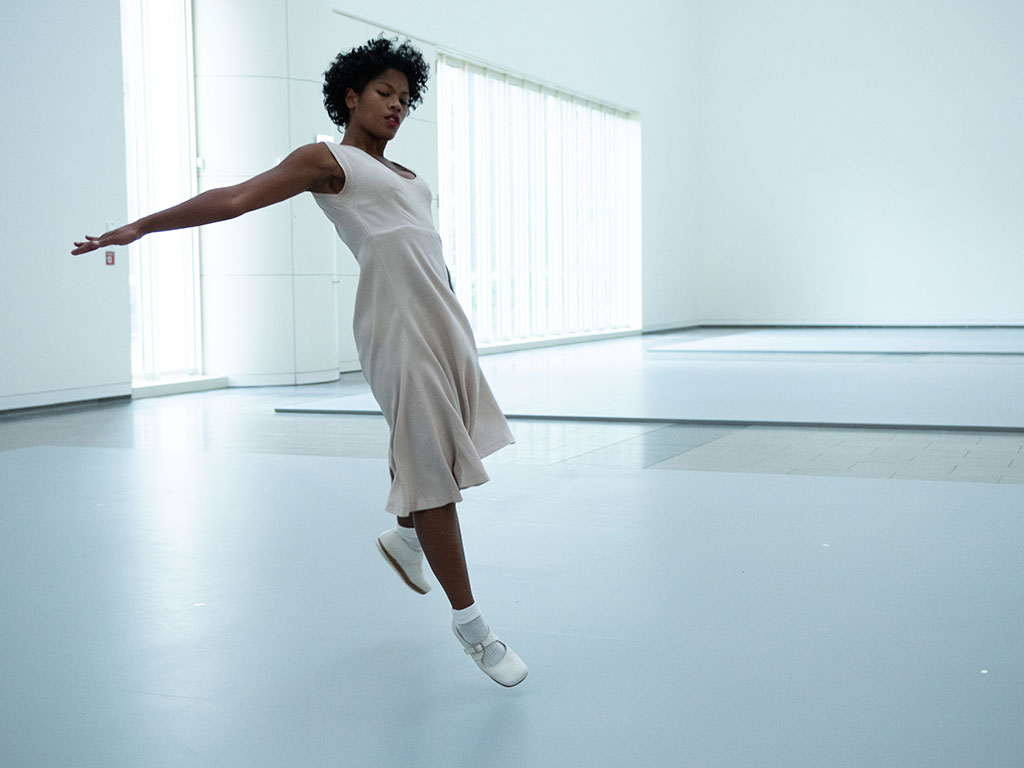The internationally renowned Belgian choreographer and dancer Anne Teresa De Keersmaeker (*1960) is one of the most important representatives of the international dance scene and has been making a decisive contribution to the development of contemporary dance for many years with her award-winning works. She has now developed an adapted version of her today iconic choreography “Fase, Four Movements to the Music of Steve Reich” (1982) for the Grabbe Halle of K20.
With this performance, De Keersmaeker established at an early stage her own choreographic language, the basic elements of which still characterize her pieces, which are celebrated worldwide. In these, De Keersmaeker explores the complex, interwoven relationships between dance and music and, deriving from this, the creative work of the body with minimalist, repetitive structures and variations in space and time.
“Fase” is based on four compositions by Steve Reich (*1936) the legendary New York-based composer and co-founder of minimal music – “Piano Phase” (1967), “Come Out” (1966), “Violin Phase” (1967), and “Clapping Music” (1972) – and takes up the principle of phase shifting through tiny variations. The strictly structured arrangement of the four movements of different lengths, comprising three duets and one solo, is based on geometric circular and line structures, which the two dancers use as orientation for their fast, minimalistically reduced and repetitive movements. The fascinating interplay of perfectly synchronized movement sequences and constantly changing forms and patterns creates a dynamic tension between the two bodies, which in some cases act in opposition and offset to each other.
For her two-week presentation at the Kunstsammlung Nordrhein-Westfalen, De Keersmaeker now breaks down her composition, originally conceived as a coherent stage version, both spatially and temporally into its four components. During the opening hours of the museum, starting every hour from 12:00 noon, the individual movements of the choreography will be danced one after the other on four grey platforms by dancers from the Rosas Company, founded by the choreographer in Brussels in 1983.
Ausstellungsansichten
